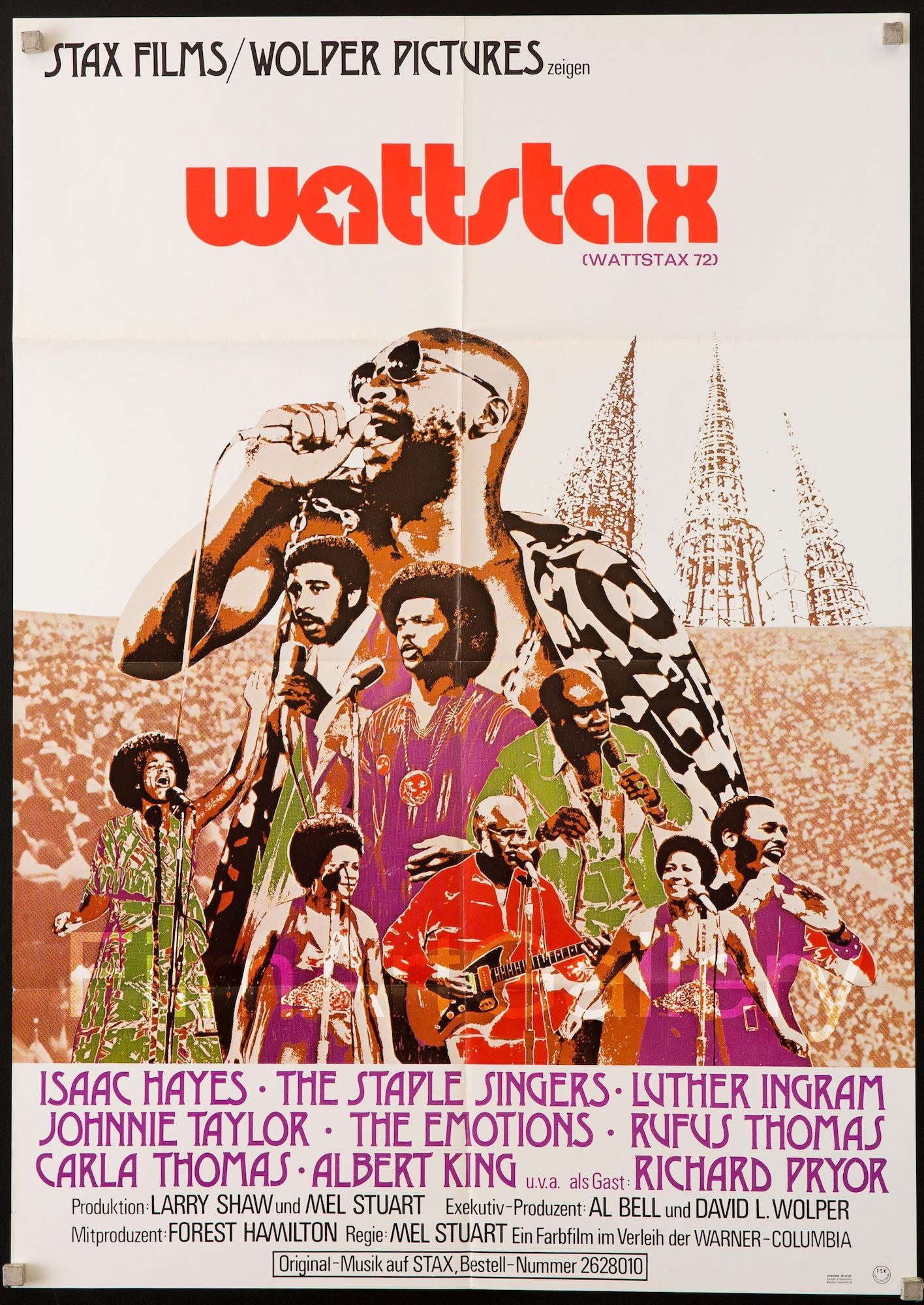 As streaming platforms offer this excellent documentary, it is essential to place it in the context of its time. Unlike Motown, Stax was a label deeply engaged politically in civil rights advocacy. The Wattstax concert, initiated by Forrest Hamilton, director of Stax Records, was born out of his experiences in Los Angeles during the 1965 Watts riots and his subsequent awareness of the annual Watts Summer Festival commemorating the uprising. Hamilton initiated the idea for the concert by rallying everyone from Stax Records in Memphis, TN, sparking the concept of a charity concert for the seventh annual Watts Summer Festival.
As streaming platforms offer this excellent documentary, it is essential to place it in the context of its time. Unlike Motown, Stax was a label deeply engaged politically in civil rights advocacy. The Wattstax concert, initiated by Forrest Hamilton, director of Stax Records, was born out of his experiences in Los Angeles during the 1965 Watts riots and his subsequent awareness of the annual Watts Summer Festival commemorating the uprising. Hamilton initiated the idea for the concert by rallying everyone from Stax Records in Memphis, TN, sparking the concept of a charity concert for the seventh annual Watts Summer Festival.
Doubts arose as Stax wasn’t sure about organizing a concert with big stars for the relatively small community of Watts. Eventually, Tommy Jacquette, the founder of the Watts Summer Festival, was contacted and supported the idea, paving the way for the concert to happen.
The documentary begins with footage of the scene being set at the Los Angeles Memorial Coliseum on August 20, 1972, interspersed with archive footage from 1965 and images from the African American community in Los Angeles. What strikes viewers today is the poverty depicted in these images. The documentary is anchored by actor Richard Pryor, whose biting humor punctuates the narrative. The proletarian, assertive images and the slogan “What you see is What you Get” intoxicate viewers right from the start. The roughness of the images juxtaposed between then and now (1972), along with the awakening and advocacy of various individuals, sets the tone. Reverend Jesse Jackson serves as the master of ceremonies, his voice commanding attention and respect.
The concert itself follows this progression: starting with raw performances by artists expressing their messages with undeniable force, and culminating with soul/funk acts including a remarkable appearance by Albert King. It’s hard to pinpoint what stands out most in this concert—the joy of seeing Rufus Thomas, Isaac Hayes, and others again, contextualized within the era, resonates deeply. The dialogues and archival footage are as important as the music itself. The fervor of the audience is also palpable and intoxicating, marking a stride in the social and intellectual liberation of African Americans.
Stax’s decision to organize this concert and produce this documentary was justified on multiple levels. It was the first time such a direct intellectual and class revolution was witnessed live. It also acknowledges the significance of their artists. Religion is never far away; similar to European history, culture in the US has been influenced by it. In the US, the emancipation of the African American society has and continues to pass through churches. Many singers have started there, and their deep, powerful voices stem from this tradition.
Some may view Wattstax as an anomaly, but that would be a mistake. One might just regret that the documentary is a bit short, given how warmly and joyfully it envelops the viewer. The strength of community and the hopes driving any culture are evident. Hamilton, the head of Stax, understood this well—building a cultural product company on solid ground, as demonstrated by Stax’s exemplarity in the field.
Featuring The Staple Singers, Richard Pryor, Carla Thomas, Rufus Thomas, Luther Ingram, Kim Weston, Jonnie Taylor, The Bar-Kays, Isaac Hayes, Albert King. In 2020, the film was selected for preservation in the United States National Film Registry by the Library of Congress for its cultural, historical, or aesthetic significance.
It’s worth noting that the film crew was predominantly African American at Stax’s request, scattered from the back rows of the stadium to the corners of the stage where artists were zoomed in. The 112,000 people present at this concert were considered the largest gathering of African Americans outside of a civil rights event to date.
Thierry De Clemensat
USA correspondent – Paris-Move and ABS magazine
Editor in chief Bayou Blue Radio, Bayou Blue News

